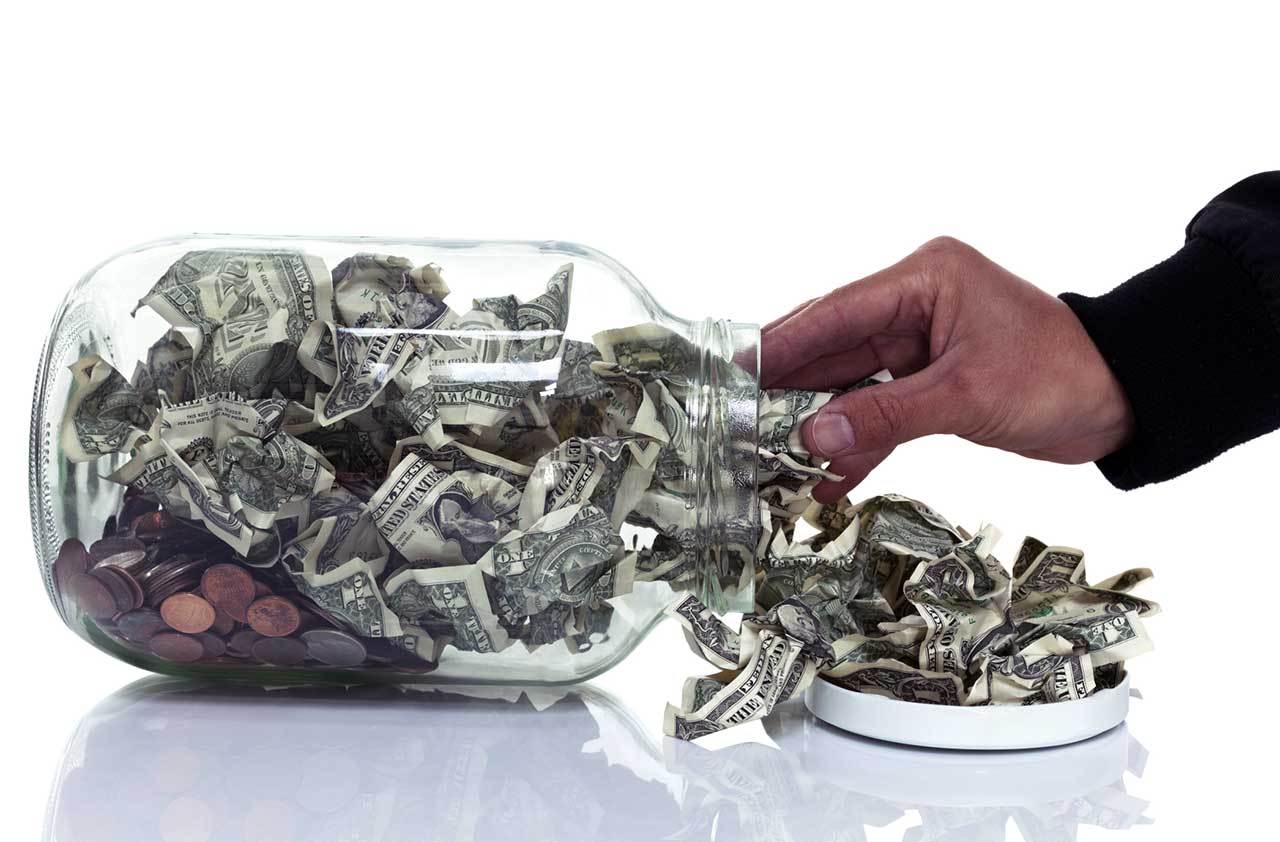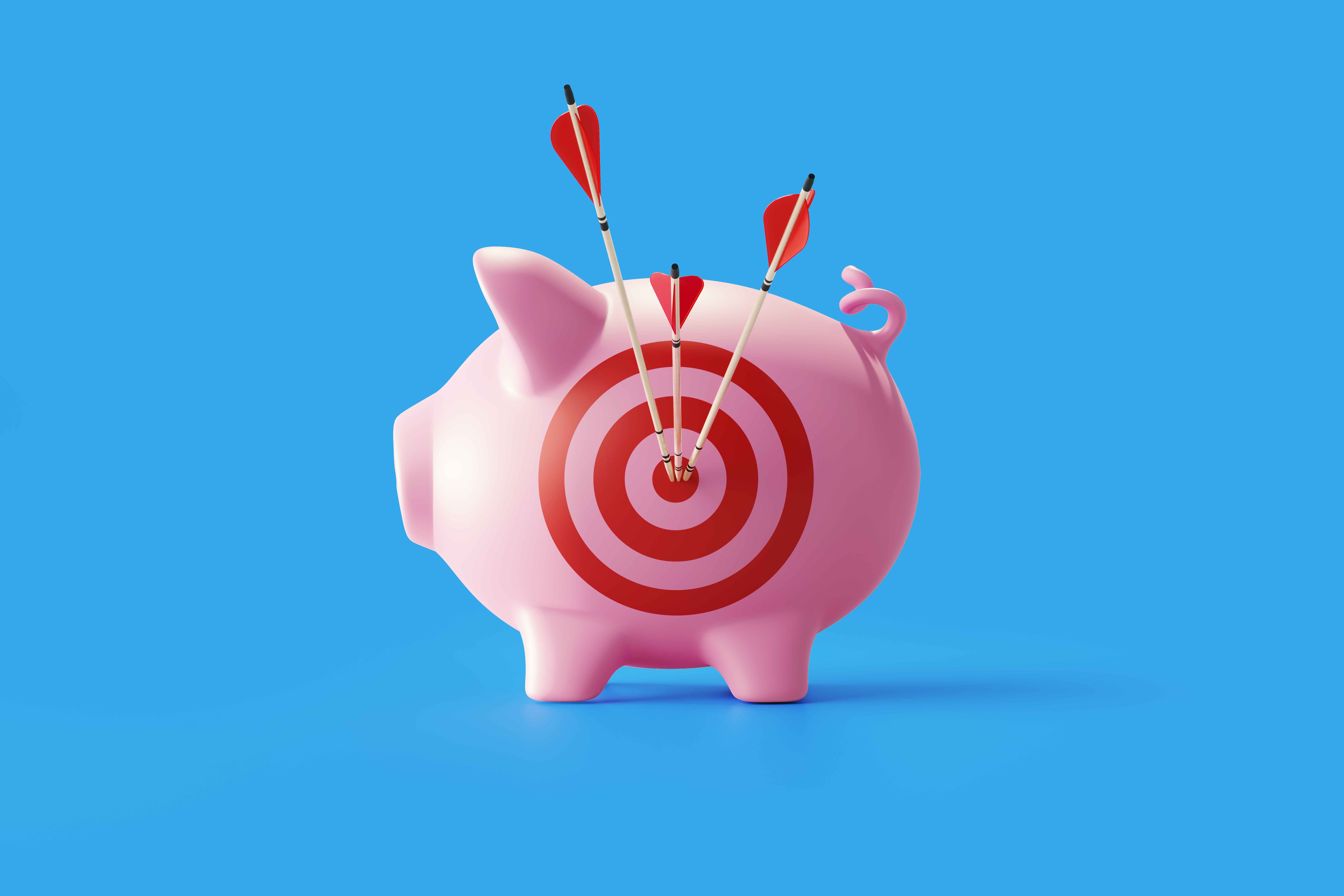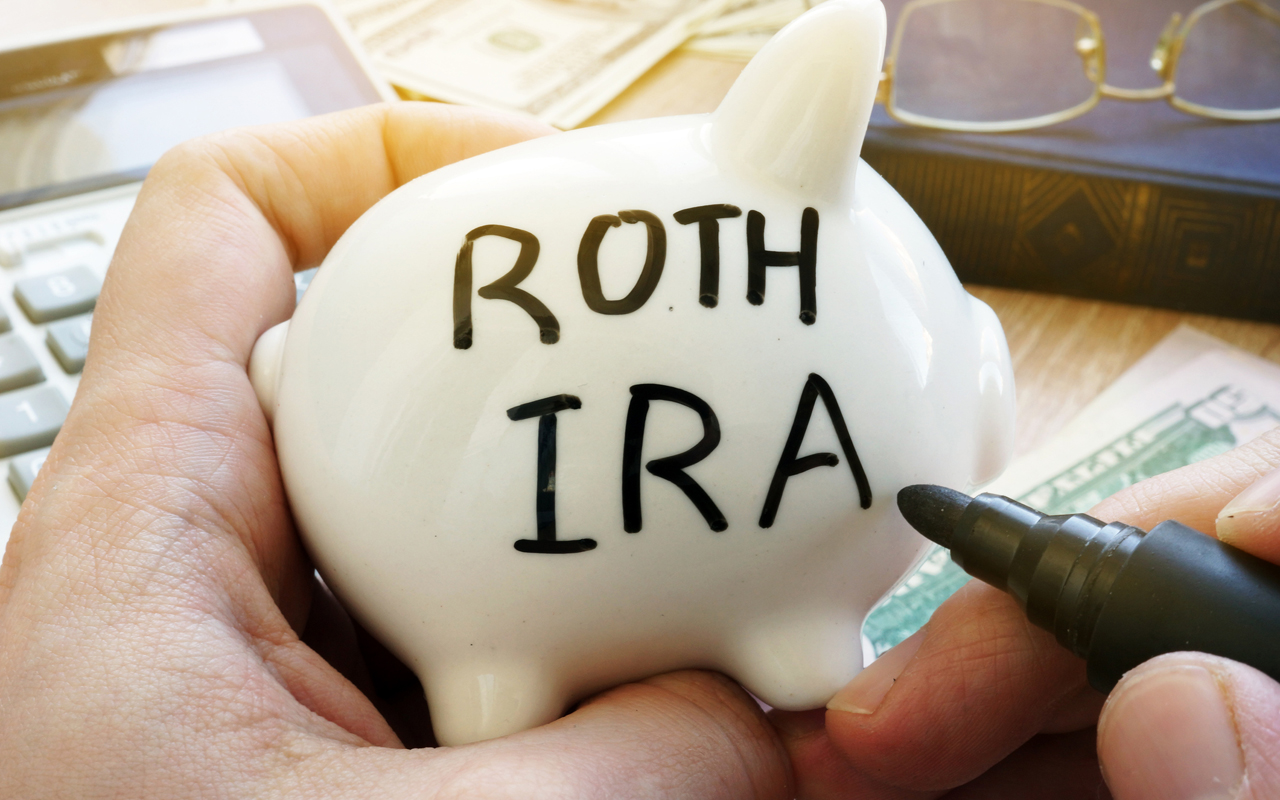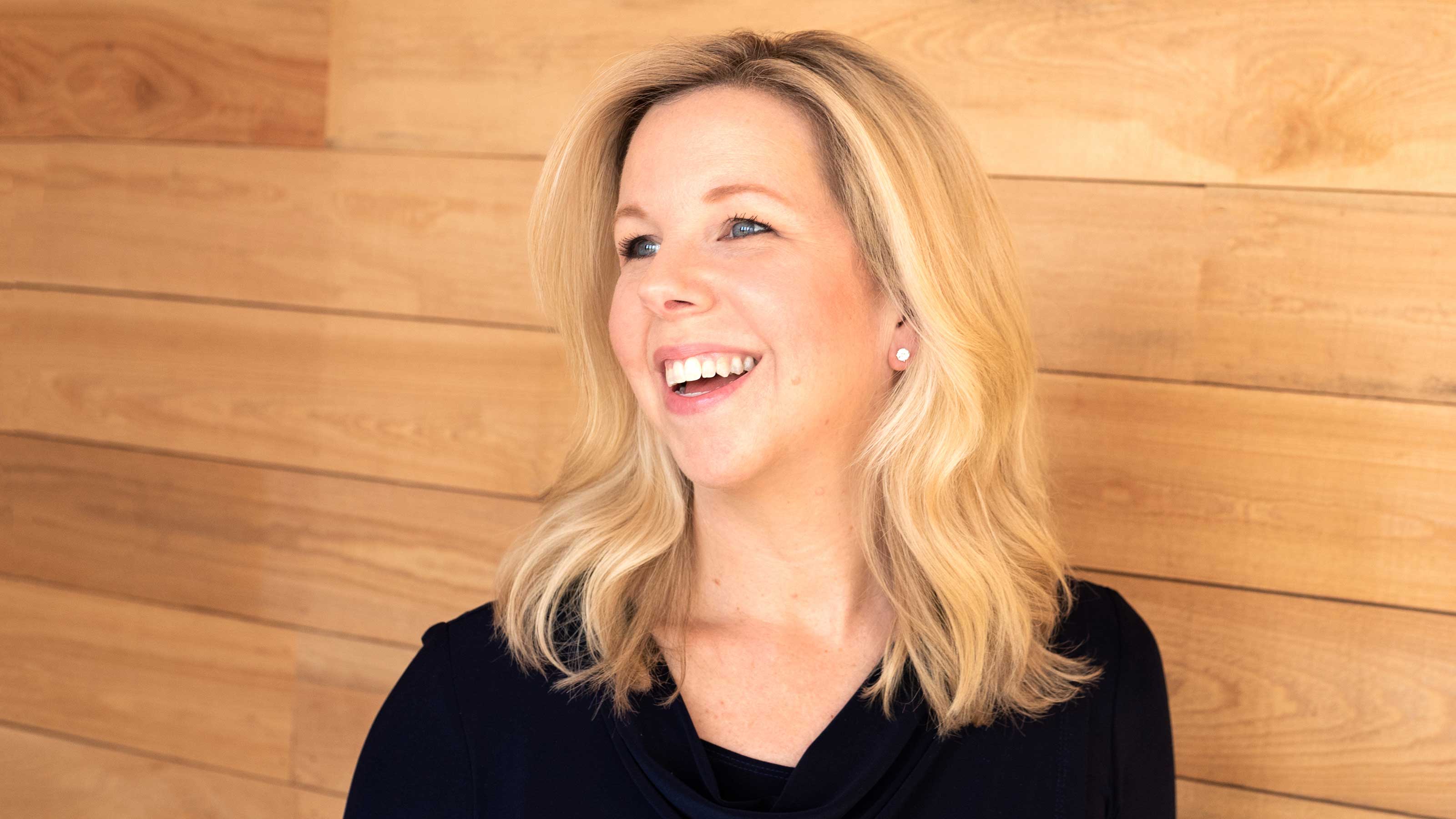The Future of Retirement
Kiplinger's Retirement Report editor Rachel Sheedy joins podcast hosts Sandra Block and Ryan Ermey to discuss the changing landscape of retirement saving. The pair also share smart ways to spend your tax refund and explain all the fuss about the yield curve.
Ryan: It's been 25 years since Kiplinger's began publishing their Retirement Report. The retirement landscape has changed drastically over that time and will likely continue to change. Kiplinger's Retirement Report editor Rachel Sheedy joins Sandy and me to tell you how in our main segment. On today's show, we start with ways to spend your upcoming tax refund and wrap up with an explanation of the dreaded yield curve. That's all ahead on this episode of Your Money's Worth. Stick around.
- Episode Length: 00:33:32
- Links and resources mentioned in this episode
- SUBSCRIBE: Apple Google Play Spotify Overcast RSS
Ryan: Welcome to Your Money's Worth. I'm Kiplinger staff writer Ryan Ermey joined as always by senior editor Sandy Block. Sandy, I believe we've both filed our taxes by now, as should have all of our listeners.
Sandy: Yes, I hope so. Remember, if you filed an extension, you still have to pay.
From just $107.88 $24.99 for Kiplinger Personal Finance
Become a smarter, better informed investor. Subscribe from just $107.88 $24.99, plus get up to 4 Special Issues

Sign up for Kiplinger’s Free Newsletters
Profit and prosper with the best of expert advice on investing, taxes, retirement, personal finance and more - straight to your e-mail.
Profit and prosper with the best of expert advice - straight to your e-mail.
Ryan: I had to explain this to my roommate. He was horrified.
Sandy: He was not listening.
Ryan: So, anyway, he's all set now, we're all set. Now everyone can anticipate their refund. The average, as you've mentioned to me, is around $2,800.
Sandy: Right. Actually, as much as there's been grousing about people saying they got ripped off this year, the refund's running about the same as it was a year ago.
Ryan: You're getting a little bit more out of your paycheck hopefully. So, we thought it would be a good time to talk about smart ways to spend your refund and we've done a sort of version of this story in the magazine for a long time. We used to do it as how to spend $1,000 and then we amped it up to how to spend $10,000, $100,000, whatever. In the most recent one, we did indeed do a thousand, and we generally, when we're coming up with pitches for this particular story, think about it in four terms, which are save it, invest it, donate it, or spend it. If you have extra money lying around, you can do this.
Ryan: This is a good time to think about these things, because people are going to have a little bit of extra money lying around. So, we did want to dispense with saving it, because honestly, you guys all know to save it either by putting it into your emergency fund or paying down debt. These are all smart sensible things to do. But we wanted to get into a couple more novel things to do with it. So, I guess we'll start with investing it. Sandy, where do you think people should invest their tax refund?
Sandy: Well, I suggest that, and we've talked about this before and we talk about it a lot in the magazine, but if you have a high deductible health insurance plan, and an awful lot of people do, I really think that a smart thing to do with your refund is invest it in health savings account. If you don't already have one, set one up. If you do have one and you haven't fully funded it, you could use your refund to max it out. This year if you have a policy with a deductible of at least $1,350 for singles, or $2,700 for family coverage, you can contribute up to $3,500 to a health savings account for a single person, or $7,000 for family coverage, plus a thousand dollars if you're 55 or older. Now, as we've mentioned before, the great thing about health savings account is that that money goes in, off, it's not taxed, it grows tax free.
Sandy: If you take it out for health care, you don't have to pay taxes on it then either. There's no sign that out of pocket medical costs are going down anytime soon. This gives you a very nice nest egg to pay for that, so you don't have to put it on your credit card, you can get the health care that you need. If you're super healthy, you can just let it pile up until you get old and use it for health care then. So, I think this is a great way to put your refund to work for you.
Ryan: Agreed. Mine is sort of along similar lines, not for your health care, but a way to sort of fill out your investments so you're a little bit better off down the line. I think that this is enough money. It may not be enough money to buy a couple of mutual funds, but it's enough money to buy a smattering of ETFs, exchange-traded funds, that you can really use to build out the diversification of your portfolio. So, a smart thing to do, I would say, is to sign-up for something like Personal Capital or even take a questionnaire. Like Vanguard has an investor questionnaire to determine what your risk tolerance is, to determine an asset allocation that makes sense to you, take a look at where your portfolio stands now, Morning Star has a free X-ray tool that will allow you to do that. Then sort of start filling in around the edges of your portfolio where you need to bolster certain positions.
Ryan: So, let's say you want to increase your allocation to international stocks, maybe you want to add a little bit of the Vanguard FTSE All-Wld ex-US small cap, you want international small caps. Maybe you want Vanguard Total International Stock, which gives you a huge smattering of overseas stock exposure. Maybe you want to ramp up a little bit of dividend exposure. You don't have to buy certain specific blue chip stocks, you don't have to buy mutual funds. Schwab U.S. Dividend Equity is a great dividend ETF that only charges 0.07% of assets in expenses. So, it's a way to add diversification to your portfolio, which as we know, is going to keep you more insulated against radical movements in the market, and you can do so at a pretty cheap cost to actually buy the stuff, and cheap expenses once you actually own it. So, let's move on to donating.
Sandy: Ryan, my choice for donation is a website called DonorsChoose.org, and it is a large compilation of classroom projects from all around the country that teachers have submitted. It really covers the waterfront of things that kids need. One of the cool things that I just discovered today is you can refine the search and you can look for classrooms in your town, or in my case, I looked at classrooms close to where I grew up, which is a pretty low income area. For just a modest amount of money you can make a huge difference in some of these kids' lives. The only danger here is you'll end up contributing to all of them, because some of them are so moving. The one that I started will probably contribute by the end of the day, is a classroom, again near where I grew up, 100% of the kids in the class are eligible for free breakfast and free lunch.
Sandy: The periodic table poster on their wall is 20 years old and there have been new elements introduced since that poster was made, so they're trying to raise about 200 bucks to get a new poster. I think they're within $50 or $60, and by the end of the day I'm going to give them that money, because these kids deserve a new periodic elements poster. That's the kind of thing it is. I found another one where they just wanted cleaning supplies, because the teacher's cleaning the classroom and they thought if they got some little brooms and things, the kids could help. So, it's just a lot of really helpful things, and I think if you're really turned off by the college scandal and what rich people are doing to get their kids into school, and the sort of inequities that we see, I think this is a great way to make a difference. Again, you can really narrow it down to projects that are meaningful to you.
Ryan: I'll tell you what, we used to have maps, you know the pull down-
Sandy: Mm-hmm.
Ryan: ... maps in my elementary school that still had Zaire and the USSR-
Sandy: Oh dear.
Ryan: ... on the maps. It's like, "Oh boy, I'm not that old folks."
Sandy: I am.
Ryan: So, my idea was one that I've written about before and I characterized it, at the time, is patronize the arts, become an arts patron. This is a really cool thing to do on a donation basis, because often times for just $1,000, a donation to your favorite museum, opera, theater, zoo, I guess zoo is not arts, but anything where you can have a sort of donor level membership, it's largely tax-deductible, as are all of your other charitable donations, if you itemize. But, you also get all of these amazing perks that help you get closer to the things that you really love.
Ryan: For instance, at the time I wrote about The Kimmel Center in Philadelphia, which is one of the sort of big theaters and music venues there, and for $1,000 membership you get all sorts of amazing benefits that go beyond just getting your name in the program. A platinum membership, that $1,000 membership, you get invitations to cast parties, you get meet-and-greets, you get a donor concierge who helps you find and book tickets. One of the cool ones, that got cut from the magazine at the time, was a $1,000 membership to the Baseball Hall of Fame, gets you complementary admission for a full year for two adults and their children, and you get four reserved seats for the induction ceremony.
Sandy: Oh my gosh. That's awesome.
Ryan: So, I mean, all of that is worth something. You're not going to get your whole $1,000 as a donation. The charitable organization decides what value those perks have and subtracts it. But it's still a way to get close to the things that you care about and make a difference for organizations that you care about.
Sandy: Yeah, I think that's really important, because for a lot of these organizations, what's so important for them is to have a regular source of income. If you make a recurrent donation, that makes it a lot easier for them to plan.
Ryan: So, the last thing we want to talk about was spending it. We have a little bit more money to spend than we did for this most recent issue, a thousand dollars.
Sandy: That's right.
Ryan: I had recommended building a home bar where they have a James Bond villain. Honestly, these are the best drinkers in the history of cinema. They always have all kinds of fantastic-
Sandy: They got good stuff.
Ryan: ... cocktails at the ready. So, I suggested, you can have like 10 bottles and really build a great bar. Vodka, gin, rum, tequila, whiskey, triple sec. I'm going to forget what I had. Bitters, aperitif, cognac and whatever you like to drink. Scotch. So, I had an editor tell me, "Scotch is whiskey, Ryan." But I said, "Well, there's a difference between a Manhattan and a Rob Roy whiskey or scotch." Anyway, but maybe now that you have a little bit of extra money to play with, you balance it out with upgrading your fitness, as well. So, use a little bit of your tax refund. I mean, I've always had the difference between a few hundred bucks a year is a difference between that gin that you really don't like and the one that you really look forward to going to. I think we also recommended maybe looking into buying a standing desk. I like the idea that if you're going to splurge, get something indulgent and something practical.
Sandy: Somethings that brings you joy, and then something that makes you look good.
Ryan: Yeah, exactly right, which also brings you joy.
Sandy: Yeah, of course, and others as well.
Ryan: What do you got?
Sandy: I got upgrade your travel plans. This one was in $1,000 package, but you could take it higher if you wanted, and there's all kinds of ways. Let's just assume you've already booked your summer vacation and budgeted how much. You could use at least part of your refund to make that vacation that much more pleasurable and comfortable. For example, you could upgrade your seat to premium economy. One thing I did, and I think we talked about this on an earlier podcast a few weeks ago, was I bid on a first class seat. Mostly, international airlines offer this, so it's probably mostly useful if you're traveling overseas, but that means you're going to be on the plane for a long time. If you've got a couple thousand dollars, you might be able to at least upgrade one way and travel like the boss.
Ryan: That's exactly right.
Sandy: I mean, it's just a whole other world up there folks. You have no idea until you've been there. The other thing, and I think we've talked about this too, is use that money to get into the lounge before you go.
Ryan: Oh yeah.
Sandy: Again, talk about James Bond. I mean, that's where all the villains are and the rich people, and how much nicer that is to spend your time when you're waiting for your flight to take off than sitting on the hard seats with the people wearing their pajama pants. So, I think maybe your refund isn't enough to plan your whole vacation, but it could make the vacation you've planned that much better.
Ryan: Up next, is Social Security going away? Do you really have to plan to live to a hundred? Rachel Sheedy answers these questions and more after the break.
Ryan: All right. We are back, and we're here with Rachel Sheedy, who is the editor of the Kiplinger's Retirement Report, a publication which has recently celebrated its 25th anniversary. So, we wanted to take the opportunity to bring Rachel in and sort of talk about the changing face of retirement, what it's looked like over the past quarter century, and what it's going to look like going forward. So, Rachel, thank you so much for coming on.
Rachel: Thanks for having me.
Ryan: So, I think the biggest change that I see, at least so many people my age, or parents, or maybe even our grandparents, they all had pensions and they all had at least a pretty good notion that Social Security was going to exist, whereas, we've been told over and over that Social Security is out the window for us. So, I mean, is that true?
Rachel: So, no. I don't think so. I think Social Security's pretty important actually. There is a chance that benefits that are promised could be pure cut a bit. There's still some time before that will happen. 2034 is what the trustee's report most recently projected. But it's a pretty important program and it's become a real bedrock of retirement income for current retirees, as well as pre-retirees. So, I would suspect that it's going to stick around. It's a good idea, if you think that it might not be there, plan for that, save more. As we think Social Security will be there, then you'll just have more money.
Sandy: Yeah, that sounds like really good advice. But say for a young person who's still many, many years away from retirement, and has student loans and rent, I mean, how do you encourage them, or what's the best way for them to get started?
Rachel: First see if your company that your working for has a 401(k). See if they offer a match and try to put it in at least as much money to make use of that match. That match is free money essentially. It's an employee benefit. You don't want to give that up. I think it's really interesting ... Or you could look up on the internet there, you put away a little bit of money early on and maybe even only for 10 years. That money, if it has a long time to grow, say you do that at age 22 to 32, you could end up with a huge pot of money in retirement age. So, I would say just even a little bit of money can go a long way, you just got to get that habit started.
Ryan: Over the past 25 years, there's been a development of different ways to save. I mean, the IRA and the Roth 401(k) haven't been around forever.
Rachel: No. The Roth IRA, I think was technically born in 1998, so it's fairly young. Roth 401(k) came along as part of that, and that is a great tool for saving for retirement, particularly for younger people who might be in a lower tax bracket. That's really when you want to use the Roth vehicle, is when you're paying lower amount of taxes now and you expect your tax rate to go up in the future. I used to be a Roth doubter.
Sandy: Really?
Rachel: I was like, "Oh, it seems too good to be true."
Sandy: I thought, at Kiplinger's we were the biggest Roth fans ever.
Rachel: Well, we are, and I have been writing about Roth's for the past 13 years or so, and I have become a true fan of them, super fan. It is a great vehicle and it offers so much flexibility in retirement. That's a key thing to have access to.
Sandy: Well, right, I mean, we hear it so often from people who are really struggling with tax ... They put all this money in 401(k)s and IRAs, and then money comes out and they to have pay taxes on it, they have to worry about required minimum distributions. It just seems like the Roth is a really simple product to have, because you can take out as much or as little as you want and not have to worry about taxes.
Rachel: Yeah, and tax, it's a lever you can control in retirement. So, if you can whittle down the amount that you pay in taxes, the more you'll have in your nest egg. So, it is an amazing vehicle and it's great to have that. You don't necessarily want to have all of your money in Roth IRAs or Roth 401(k), but if that is part of your plan, offers flexibility.
Ryan: I mean, so let's talk a little bit more about how things have changed. I think one of the humongous ones is that when you're considering the kind of money you're going to need to ride off into the sunset here, that people are living a lot longer.
Rachel: Yeah, that's been one of the big changes I think over the past 25 years. Life expectancy has really increased. So, everybody should be planning to live to a hundred I think.
Ryan: Sheesh.
Sandy: Oh boy.
Rachel: Some experts who said go beyond that even. That's just ensure that you have money when you can no longer work. If you live until your 90s ... Some 90 year olds are in great health and great shape, but you might not want to work and you just might not be able to. So, I think the big question mark these days is how do you plan to cover those later years?
Sandy: Do you think that people in the past 25 years have figured out that they have to work longer because of that, or are people still thinking, "I'm going to retire at 62 and claim Social Security, and spend the next 40 years playing golf?"
Rachel: Well, I think we're seeing more people choosing to work later. I do think there are people that think that they will work later, and then can't do it. So, I think that's one problem and I think that's what you really need to plan for. It's great if you can work into your 70s, you may get hit with a major health issue that won't allow you to do that, or you might get laid off. Certainly that happened. Been writing about retirement since the financial crisis, and those were some really rough times for pre-retirees and retirees. But, a lot of people are working later in life, and the current system is sort of built for people to retire in their 60s. Doesn't mean you have to, but that's where it's built. We're seeing, as people work later in life, them running into those rules that were meant for someone who taxed them.
Sandy: They assume you're going to retire at 65, yeah?
Rachel: Right, yeah.
Ryan: Yeah, but also assume that you're going to die before you're 80, you know?
Sandy: Yeah.
Rachel: Right, yes. I mean, these days people might have a retirement that could last 20 to 30 years, particular they retire in their 60s. So, that's a major feat to make a nest egg last that long. That's the key, you want a sustainable nest egg.
Ryan: I mean, what are some strategies for someone who's maybe not right on the cusp of retirement, but if it's something that you're thinking about now, with the current system in place, how do you go about making that nest egg last if you think you're going to be living into your 90s?
Rachel: It's a good question. If you are young, the biggest advice is save, save, save. That's really what you can do right now. Pay attention to your tax situation. Even now, it's certainly something that you want to do when you're older. As you progress closer to retirement, then you might start looking at vehicles for guaranteed income. So, if you don't have a pension, which many people don't have these days, you could look to annuities, or you could look to maximize in Social Security, which we think will be there, and there are strategies that you can use to do that, one of them being not take it until age 70, under current rules. So, you might want to work later, plan to work later to maximize that. But I think we've seen, in recent years, how important that stream of guaranteed lifetime income is.
Rachel: So, if you can cover your basic expenses, then you're less reliant on your nest egg and you can have that. It'll go up and down with the market. That can cover you discretionary expenses, or the fun stuff. But you want to make sure that your basic expenses are covered. So, again, if you're in the saving mode, save, save, save, and hopefully you'll get enough to at least cover your basic expenses, and likely you will. I mean, I think a lot of retirees have been surprised at how much money they've ended up with and are suddenly facing these big tax bills from RMDs and that kind of thing.
Sandy: Required minimum distribution-
Rachel: Required minimum distribution.
Sandy: ... which is the money you have to take out when you're 70 and a half.
Rachel: Yes. You don't have to spend it, but you need to take it out.
Sandy: Take it out. Well, I know you guys get a lot of feedback and you hear from people who have retired. What can those of us who are still saving learn from people who don't have a pension and are managing their money and are trying to make it work? Anything we can learn from them?
Rachel: Yes. Well, I think diversification is a key point. So, in terms of investing, making sure that you're not reliant all on one stock, or one mutual fund. These days, most likely. Tax diversification, again, this goes back to the question of the Roth. So, if you contribute to a traditional retirement account, which is tax deferred, and you contribute to a Roth, which is eventually tax free, and then have a taxable account, because you do want to have some liquid money also, so then you're not tapping into your retirement accounts and incurring penalties. The age threshold there is usually 59 and a half for most accounts. So, have that diversification, and that makes a big difference. Save a little bit of money, set aside. Try not to let lifestyle creep happen to you when you get a raise, and that makes a big difference, will go a long way.
Ryan: One of things, an interesting thing that you mentioned there was not holding everything in one stock, which I think is probably not very common these days.
Sandy: Oh yeah.
Ryan: But back in the day, a buddy of mine, his grandfather had 100% of his portfolio in Proctor & Gamble stock. I don't know if he actually worked there, but that brings up ... My grandfather worked for Bell, Ma Bell for his entire career, which is very different from the workforce today. I mean, is there a sort of implication for the reality that people are hopping around different jobs and doing sort of, what we call, gig economy work these days?
Rachel: I think in the past 25 to 30 years is when we really started to see a lot more job hopping. Gig economy is pretty new, past five years perhaps. So, yeah, I think that's something where we're going to have to see new solutions presented, because a pension is great if you stay at one company for 30 years. Really works well. But if you are changing jobs every couple of years, the pension didn't really work for you in the first place. So, we mourn the loss of pensions in some ways. In many ways, it does not fit what the current workforce needs. So, I think it's still sort of an open question at this point. I do think that retirement plans and rules have been loosened a bit to allow more portability of retirement balances. Well, it's easier to get into investing status. I think the rules for that used to be much more difficult. That's loosened up. So, we'll see some changes I think to accommodate.
Ryan: Well, regardless of the changes, because obviously we can't quite anticipate exactly what's going to happen, so regardless of what changes may be coming down the line, what would you say is the sort of number one thing people who are maybe a couple decades out from retirement should really be thinking about?
Rachel: I would say that minimizing debt would be one thing, because you really don't want to carry that into retirement if you can avoid it. Certainly we are seeing more seniors carrying debt into retirement. But, can you consider paying off your house, winnowing credit card debt, winnowing student loan debt if you can. I think that's a big issue and will become a bigger issue. Certainly we've see student loan debt impact people's ability to save for retirement at younger ages. Make use of employee benefits in terms of health savings accounts. Health costs, that's a big concern in retirement. You likely will have Medicare, but Medicare is not free, there are costs that come with that as well. There's annual health estimate that Fidelity puts out. I think it was recently $280,000 for a 65 year old couple retiring this year. So, you do want to think about having a nest egg to pay for health care, and in retirement as well.
Ryan: Alright. Well, there you have it. Rachel Sheedy of the Kiplinger's Retirement Report. Where can we find all the fantastic stuff that you're working on?
Rachel: So, you can go to Kiplinger.com and you can find us on the store page at Kiplinger's Retirement Report, if you want to read us in print. But we also have our content go online, too.
Ryan: We'll put some of that stuff in the show notes. Make sure to check it out. Rachel, thank you so much for coming on.
Sandy: Thanks for coming.
Rachel: Thank you.
Ryan: When we come back, I explain that an inverted yield curve is an economic red flag, not a skateboarding term. Don't go anywhere.
Ryan: So, before we go, we wanted to do a quick "Explain Like I'm Five" segment. Sandy, there was something that you were asking me about earlier this week.
Sandy: That's right, Ryan. I've been hearing and reading a lot about the yield curve and what direction it's going, and what that means for the economy. I'm really not sure what that's all about, so maybe you can walk me through why I should care and what's going on right now.
Ryan: Well, this is serendipitous, because I'm writing about it as we speak. So, the yield curve is really a visual representation of interest rates on U.S. Treasury bonds. A "normal" yield curve under a healthy economy slants upward with yields on bonds growing bigger as maturities grow longer. That makes sense right, for anyone who's used a CD.
Sandy: Right. They give you a higher interest for a five year CD than a one year CD, because you're locking up your money for five years, and you're also taking the risk that interest rates might go up and you can't take advantage of it.
Ryan: Exactly, right. So, the principle is the longer your money is locked up, the more you should get paid. So, when people are assessing the yield curve, they typically would pick two points to look at. The two that people have been looking at recently are the yield for three month treasuries and 10 year treasuries.
Sandy: Big difference there.
Ryan: Well, sort of. But right now the yields on those two treasuries are very similar.
Sandy: Alright, that makes no sense.
Ryan: So, this is what's called a flat yield curve. It means you're getting paid about the same to lock your money up for 10 years as you are for three months. A few weeks ago, the yield curve actually inverted, meaning that you are, for a short time there, getting paid more for three months than you are for 10 years.
Sandy: Okay, so what does that mean? Why would anybody do that?
Ryan: So, it's a huge red flag, and that the reason that it happens is because short term rates are controlled by the Federal Reserve, and they had been raising rates over the past couple years, although modestly.
Sandy: They're pausing now I think.
Ryan: They are. But long term rates reflect the sentiment of investors. So, without getting too far into the weeds, because you are five years old after all-
Sandy: But I'll be 15 in 10 years.
Ryan: A curve like this shows that investors don't have very much confidence in the future health of the economy. They're concerned about inflation in interest rates, they're piling into these long term bonds in order to lock in those rates, which drives up the price of those bonds, right?
Sandy: Mm-hmm.
Ryan: The more people that invest in something, the higher the price goes, and bond prices move in the opposite direction of yields, so that's driving down yields on the long term. So, the reason that's a big red flag is because an inverted yield curve has appeared before every recession that we've had since the mid-'60s. Although, it should be noted that it's like a square rectangle thing. So, all recessions are preceded by yield curve inversions, but not every yield curve inversion means that we're going to have a recession.
Sandy: Which kind of makes sense, because, I mean, some people seeing that will say, "Well, the economy is just roaring. I mean, unemployment rate is really low, stock market's doing really well." How serious of a threat is this recent inverted yield curve?
Ryan: It should be ringing a little bit of a alarm bell in your head, but not enough for you to completely batten down the hatches. The recent inversion that we had didn't last very long. It was like less than a week, and it wasn't very severe. It only dipped a little bit under and we're back to it sort of being-
Sandy: Now it's flat.
Ryan: ... flat. So, what does it mean? Well, bear markets typically proceed recessions, and we don't necessarily think that this is an iron clad indicator of a recession. But what it does probably mean is that we're closer to the end of the current economic recovery, and we're closer to the end of the current bull market than we are to the beginning. I mean, both are about to be the longest that they've ever been. The bull market is already the longest it's ever been. The economic recovery, I mean, there was a time since the last recession, will be the longest it's ever been in July. So, it's no reason to panic, it's no reason to sell our of your stocks, it's really no reason to change course. But I wouldn't go and make any humongous bullish bets, and I would just be weary, like I said, we're closer to the end than we are to the beginning.
Sandy: So, since I'm five, I'm probably not really worried about this. But if I'm 55, or 60, maybe I'd want to be a little less aggressive in stocks right now if I'm getting close to retirement?
Ryan: Just make sure that you're in line with what you're comfortable with. So, for instance, if your portfolio has gone up and up and up through this bull, and now the stock portion of your portfolio is outsized compared to your target allocation, now is a time to go back, review your target allocation, and make sure you're in line with your risk tolerance and what you're comfortable with.
Sandy: Good advice, Ryan.
Ryan: That's it for this episode of Your Money's Worth. For show notes and more great Kiplinger content on the topics we discussed on today's show, visit kiplinger.com/links/podcasts. You can stay connected with us on Twitter, Facebook or by e-mailing us at podcast@kiplinger.com. If you liked the show, please remember to rate, review and subscribe to Your Money's Worth wherever you get your podcasts. Thanks for listening.
Links and resources mentioned in this episode
- Great Ideas for $1,000: Home, Travel, Gifts & Fitness
- 12 Smart Ways to Spend $1,000
- Best ETFs for Your Investment Portfolios
- DonorsChoose.org
- 10 Myths About Health Savings Accounts
- 6 Ways to Build a Roth Retirement Nest Egg
- 9 Smart Strategies for Handling RMDs
- How to Draw a Steady Portfolio Paycheck in Retirement
- Are You Really Ready to Retire? 8 Steps to a Happy Retirement
Profit and prosper with the best of Kiplinger's advice on investing, taxes, retirement, personal finance and much more. Delivered daily. Enter your email in the box and click Sign Me Up.

Block joined Kiplinger in June 2012 from USA Today, where she was a reporter and personal finance columnist for more than 15 years. Prior to that, she worked for the Akron Beacon-Journal and Dow Jones Newswires. In 1993, she was a Knight-Bagehot fellow in economics and business journalism at the Columbia University Graduate School of Journalism. She has a BA in communications from Bethany College in Bethany, W.Va.
-
 'Donroe Doctrine' Pumps Dow 594 Points: Stock Market Today
'Donroe Doctrine' Pumps Dow 594 Points: Stock Market TodayThe S&P 500 rallied but failed to turn the "Santa Claus Rally" indicator positive for 2026.
-
 The Wealth Equation: Balancing Money and Stress
The Wealth Equation: Balancing Money and StressSponsored Don’t let assets be a liability that strains your family.
-
 Is Your Emergency Fund Running Low? Here's How to Bulk It Up
Is Your Emergency Fund Running Low? Here's How to Bulk It UpIf you're struggling right now, you're not alone. Here's how you can identify financial issues, implement a budget and prioritize rebuilding your emergency fund.
-
 PODCAST: Defusing the Retirement “Tax Bomb” with David McClellan
PODCAST: Defusing the Retirement “Tax Bomb” with David McClellanTax Breaks If you’ve dutifully socked away money in a 401(k) or IRA for years, you could be in for an unpleasant shock when it comes time to take money out of those accounts. Also, the IRS is sending out a surprise round of checks.
-
 PODCAST: The “Gray Resignation” with Liz Windisch
PODCAST: The “Gray Resignation” with Liz WindischMaking Your Money Last Pandemic pressures (and high stock and real estate values) are leading many to try to move up retirement. Plus, tax-filing season gets under way.
-
 PODCAST: The Pros and Cons of Target Date Funds with Tony Drake
PODCAST: The Pros and Cons of Target Date Funds with Tony DrakeFinancial Planning The simplicity of target date funds has made them popular, particularly among 401(k) savers. But investors may be paying a price.
-
 PODCAST: Oh Unlucky Heirs with Tim Steffen
PODCAST: Oh Unlucky Heirs with Tim SteffenFinancial Planning Just because you’re in the will doesn’t mean you’re sitting pretty. Also: Does October deserve its scary reputation for stocks?
-
 PODCAST: The Ins and Outs of IRAs with Ed Slott, CPA
PODCAST: The Ins and Outs of IRAs with Ed Slott, CPARoth IRA Conversions Are you saving for retirement? Good start. But almost everyone has something to learn about optimizing their individual retirement account from IRA strategist Ed Slott. Also, the next round of retirement-planning changes Congress is eyeing.
-
 PODCAST: How Annuities Could Work for You
PODCAST: How Annuities Could Work for YouFinancial Planning No doubt, investing in annuities can be a tough call for the active investor. But there comes a time when relinquishing some control in exchange for reliable income can be a wise move. Also: remembering the biggest financial fraud in history.
-
 PODCAST: Estate-Planning Your Stuff with T. Eric Reich
PODCAST: Estate-Planning Your Stuff with T. Eric ReichEmpty Nesters What to do with the house, the vacation house and the china? We talk with a financial adviser who's got some wise counsel. Also, who makes up the so-called Generation I?
-
 PODCAST: Having the Money Talk with Your Parents, with Cameron Huddleston
PODCAST: Having the Money Talk with Your Parents, with Cameron HuddlestonFinancial Planning for Alzheimer's Managing your parents' finances can be a difficult situation. Doing so if you haven't laid down a plan for how to do it is worse.

